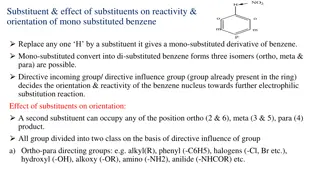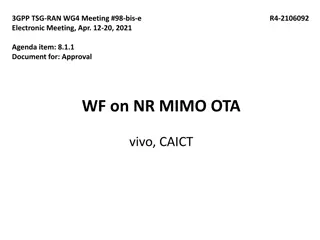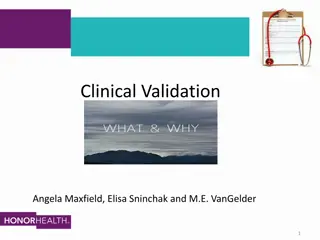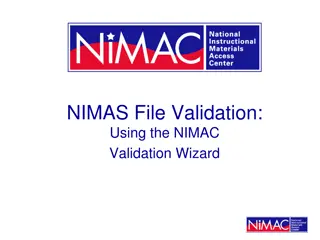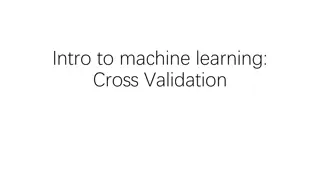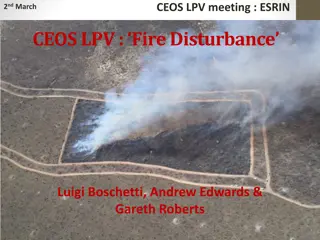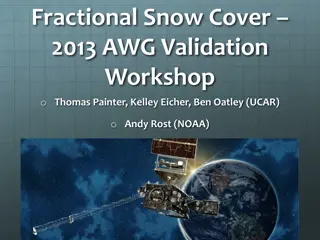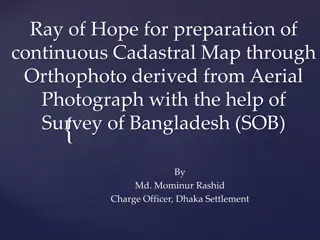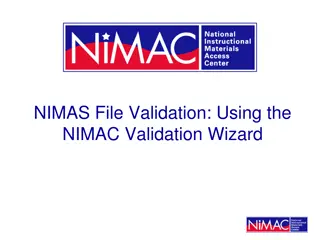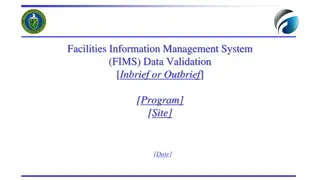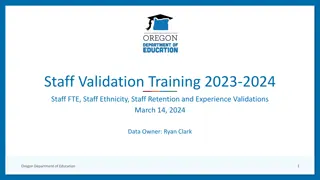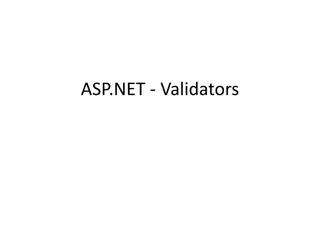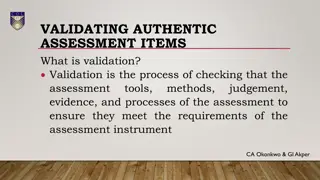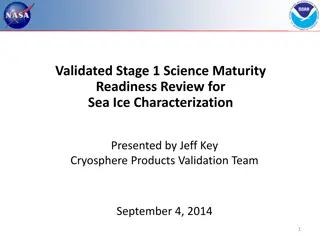Ortho Vision Validation and Operation in RCI
Role of RCI laboratory, analyser requirements, validation process, installation verification, and PQ testing for Ortho Vision system. The RCI laboratory plays a crucial role in various testing processes including blood grouping, antibody ID, and compatibility testing. Validation process includes URS/Tender process, validation plans, writing SOPs, and staff training. The software and hardware installation, system configuration, and operator qualification are essential for operational verification. PQ testing ensures assay sensitivity, repeatability, robustness, and reproducibility for each test.
Download Presentation

Please find below an Image/Link to download the presentation.
The content on the website is provided AS IS for your information and personal use only. It may not be sold, licensed, or shared on other websites without obtaining consent from the author. Download presentation by click this link. If you encounter any issues during the download, it is possible that the publisher has removed the file from their server.
E N D
Presentation Transcript
Ortho Vision Validation and Operation in RCI Aisling Costelloe Senior Medical Scientist RCI Laboratory Aisling.Costelloe@ibts.ie
Ortho Vision Validation and Operation in RCI Ortho Vision Validation and Operation in RCI Role of RCI laboratory Analyser requirements Validation Process Ortho Vision Validation PQ Validation Outcomes Validation Deviations/Findings Interface testing Ortho Vision- Go Live Ortho Vision Operation
Role of the RCI Laboratory Hospital Blood Bank (3 institutions) Red Cell Immunohaematology referral laboratory o 2,500 samples per year (92% are complex in some way) Antenatal testing Investigation of complex patient samples Red Cell Importation Resolution of ABO/Rh anomalies Research Publish novel, unusual and interesting findings.
Analyser requirements Blood Grouping & Rh/K phenotyping Perform routine antibody ID (single specificities e.g. anti-D, anti-c Perform antibody titrations Perform red cell phenotyping Perform compatibility testing Overall perform more automated work to free bench for research/project work
Validation Process URS/Tender Process Validation Plans (IQ/OQ/PQ) + Writing SOPs + Development & Testing of LIS/Ortho Vision Interface + Staff training Go live and post performance monitoring for 3 months
Ortho Vision Validation IQ Software installation verification Hardware installation verification System Configuration OQ Standard Operating procedures verification Operator qualification Installation verification by vendor Operational verification Consumables loading and verification Alarm/ Antivirus verification Backup and recovery verification
Ortho Vision Validation- PQ Each assay tested under the following headings: Sensitivity(including Limit of Detection) Repeatability Test and Process Robustness (Cross contamination) Reproducibility Intra assay Reproducibility (Repeatability) Inter assay Reproducibility / Parallel
Ortho Vision Validation- PQ Assays validated: 1. ABO/Rh Typing 2. Antibody Screening 3. Rh/K Phenotyping 4. Antibody Identification 5. Compatibility Testing 6. Direct Antiglobulin Test (DAT) 7. Extended Phenotyping (Duffy, Kidd, MNS, k, Cw, Kpa, A1, P1, Lea, Leb, Lua)
Validation Outcomes Assay Outcome ABO/Rh Typing PASS Antibody Screening PASS (with deviations*) Rh/K Phenotyping PASS Antibody Identification PASS (with deviations*) Compatibility testing PASS Direct Antiglobulin Test (DAT) FAIL Extended Phenotyping (Duffy, Kidd, MNS, k, Cw, Kpa, A1, P1, Lea, Leb, Lua) PASS (with deviations*)
Validation Deviations/findings Assay Deviations/findings Action by RCI ABO/Rh Typing None N/A Antibody Screening 1.Weak anti-E not detected 2. Enzyme only anti-E not detected Performed LoD testing using anti-E sample The detection of weak antibodies is a known serological limitation. Weak antisera controls are in place for antibody screen testing. Rh/K Phenotyping None N/A Antibody Identification 1. Unable to perform ENZ-IAT technique on Ortho Vision 1. Perform ENZ technique on Ortho Vision as opposed to ENZ-IAT. 2. Weak anti-E not detected 2. As above 3. Cross-contamination occurred on three separate occasions 3. a. Daily probe maintenance blocked b. Fresh vial of BSA used daily c. Vials of reagent cells are numbered to avoid potential carryover
Validation Deviations/findings Assay Deviations/findings Action by RCI Compatibility testing Incompatibility not detected between Fya+ donor cells and patient sample containing anti-Fya. Incompatibility not detected by manual BioRad. Incompatibility was not detected due to sample condition. No corrective action required. Direct Antiglobulin Test (DAT) False negative results obtained with Ortho Vision for EQA samples only RCI did not progress with DAT testing on Ortho Vision Extended Phenotyping (Duffy, Kidd, MNS, k, Cw, Kpa, A1, P1, Lea, Leb, Lua) Anti-N negative control giving positive results RCI did not progress with N phenotype
Interface testing LIS = eTraceline (MAK) Development of result transfer between IBTS-MAK- Ortho/Brennans Multi-departmental
Ortho Vision- Go Live Go live date: March 2021 4 x test samples ran initially which covered all testing profiles Issues on go live: Interface related only Training Basic training provided for all staff in advance Priority given to on-call staff
Ortho Vision Operation Advantages Automated assays for previously manual methods Titration ID Use of NHSBT panel for exclusions Phenotyping Bidirectional interface Transfer of reaction grades, reagent lot #/ expiry date direct to patient file on LIS QC tracking Product & Lot No. easily tracked Usage data available
Ortho Vision Operation Disadvantages TAT Multiple different test profiles run at once Sample Volume (system uses 50ul of plasma for Ab ID) ENZ-IAT not available Unable to modify sample type Unable to register anti-Fya as a control (Antibody screen/ID gives discrepant results and thus fails QC)
Ortho Vision Operation Incidents since go live: Errors with interface Weak Anti-D not detected by Ortho Vision detected by manual BioRad technique All negative results by ENZ and IAT are confirmed with manual ENZ-IAT Phenotyping controls M Type [Error: ? or TFC ] Fyb Type [<2+ reactions i.e. not acceptable]


